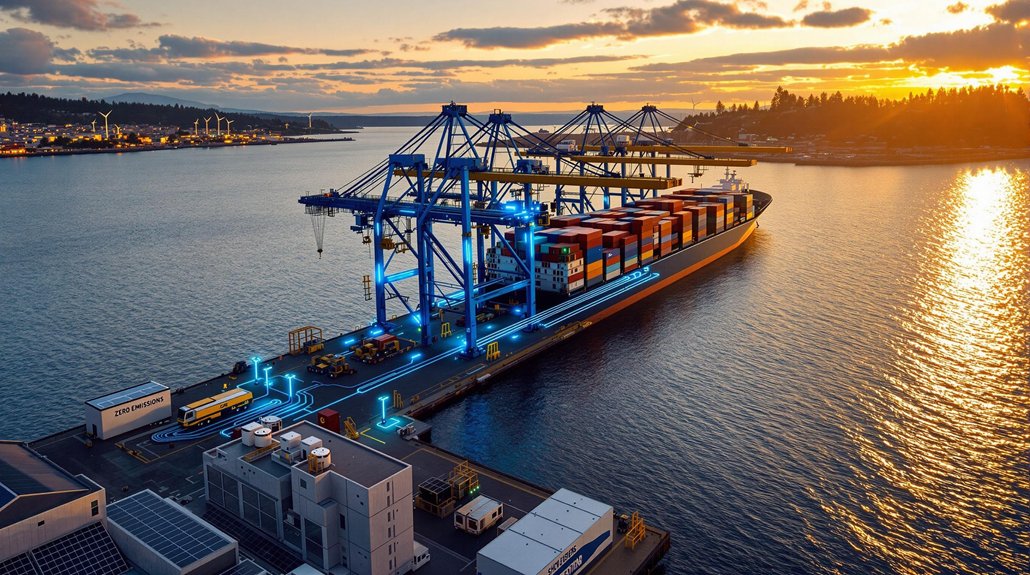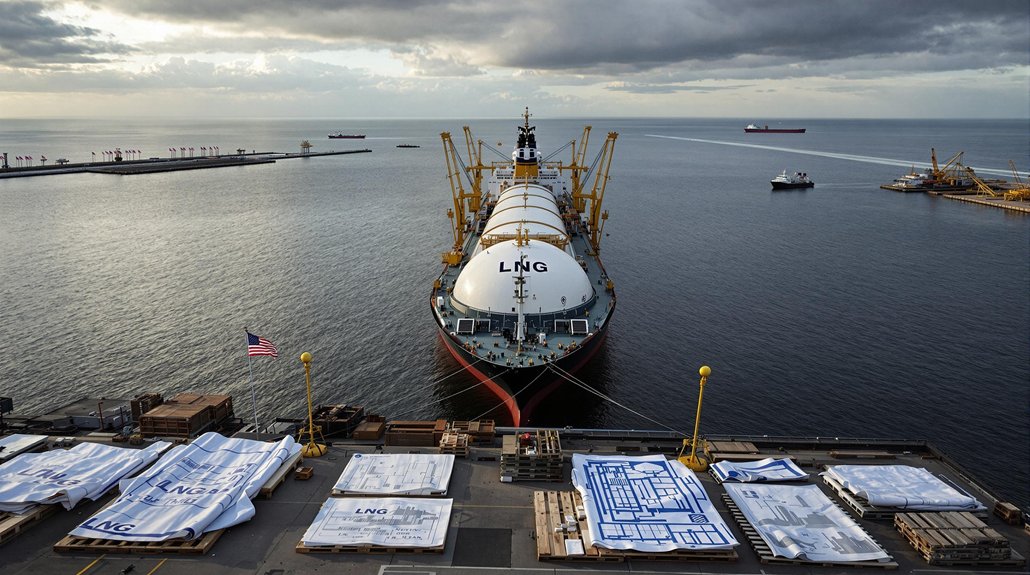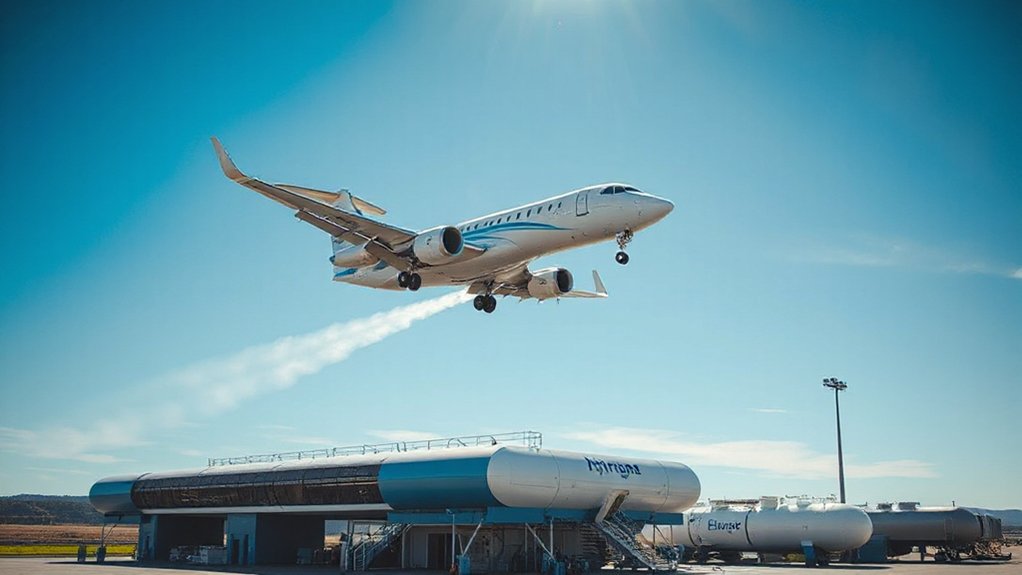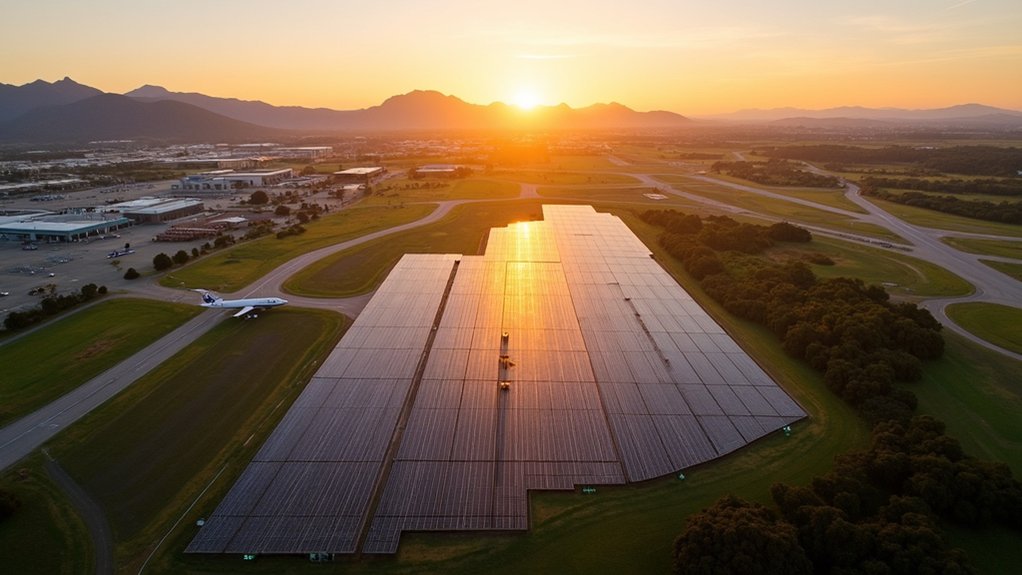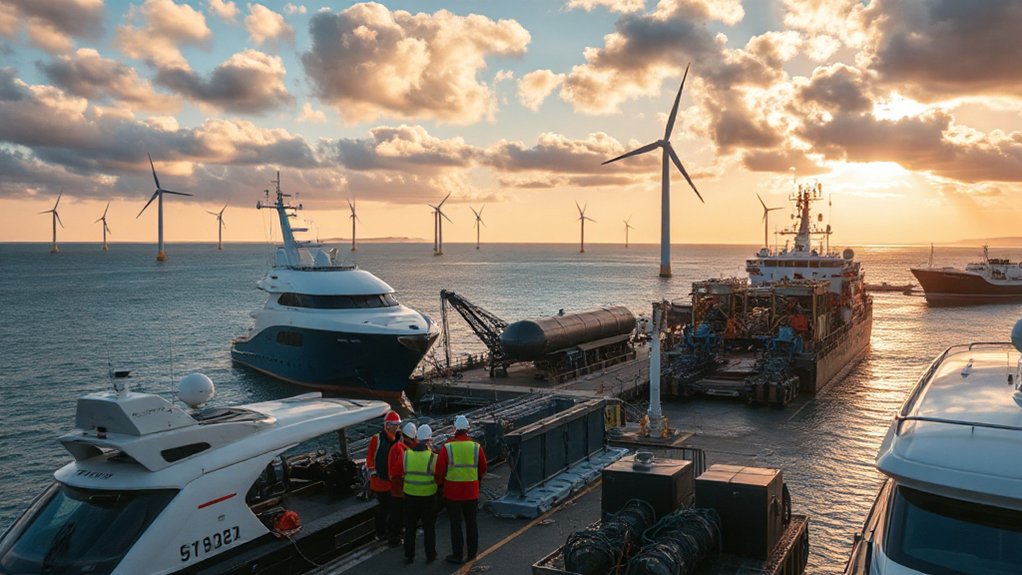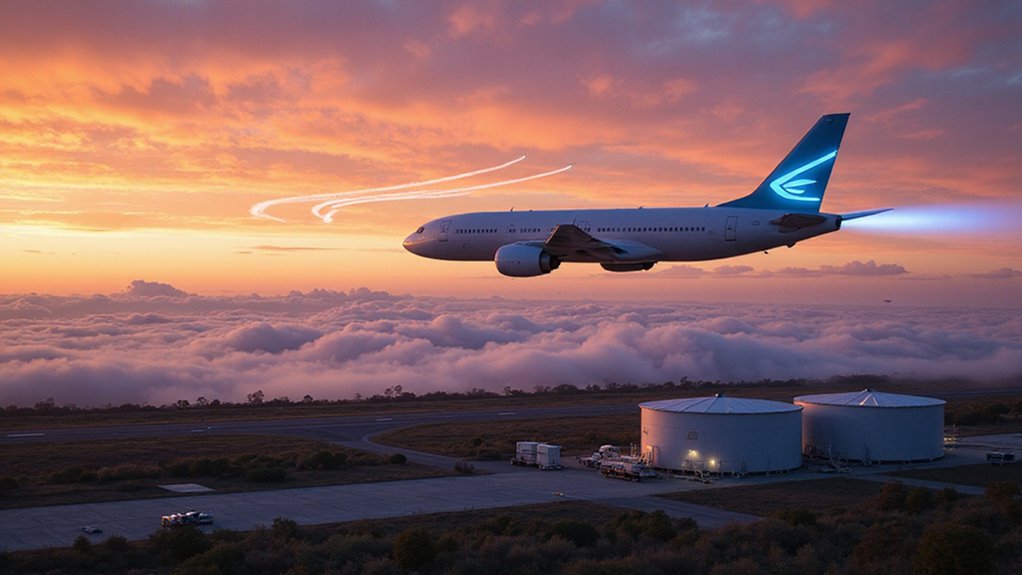Seattle’s Port is betting big on a zero-emissions future. Their ambitious Waterfront Clean Energy Strategy aims to quadruple power capacity by 2050, with $500 million in federal funding requested. Shore power at places like Pier 66 lets ships plug in, cutting diesel emissions by 80%. They’re not messing around—home-ported vessels must plug in by 2027. Partnerships with Northwest Seaport Alliance and Seattle City Light drive this green gamble forward. The stakes couldn’t be higher.
While many ports continue making empty promises about environmental improvements, the Port of Seattle is taking concrete action to create a zero-emissions future. Their Waterfront Clean Energy Strategy isn’t just fancy paperwork gathering dust. It’s a real plan to electrify everything from buildings to vessels on Port-owned properties. And they’ll need it—power demands are expected to quadruple by 2050. That’s a lot of juice.
The money is flowing too. Seattle and Tacoma ports have applied for a cool $500 million in federal funding to ditch diesel forever. The EPA already handed over $104 million to Washington ports through the Clean Ports Program. Cash talks, emissions walk. This shift mirrors the national energy trend as renewables continue to outpace fossil fuels in grid contribution across America.
Green ambitions get supersized with a $500 million federal funding grab to kill diesel permanently at Seattle ports.
Shore power is the star of the show. By plugging ships into the local grid at places like Pier 66, cruise vessels can turn off those dirty engines while docked. The strategy identifies shore power infrastructure as the primary driver of increased electricity demand. The results? An 80% reduction in diesel emissions and 66% less CO2. Not too shabby for ships that normally spew a quarter of their Puget Sound emissions while just sitting there. By 2027, every home-ported vessel in Seattle will have to plug in. No exceptions.
The Northwest Ports Clean Air Strategy doesn’t mess around with half-measures. Total phase-out of emissions is the goal. Seattle wants to be North America’s greenest port. Lofty? Sure. Impossible? We’ll see.
Of course, you can’t power everything with good intentions. The port is upgrading infrastructure beyond just plugs for ships. They’re electrifying cargo equipment and exploring alternatives like hydrogen and ammonia. It’s not simple or cheap.
Partnerships matter here. The Port of Seattle, Northwest Seaport Alliance, and Seattle City Light are working together on this massive grid makeover. Because let’s face it—a zero-emissions port requires more than just one organization flipping switches. It needs a whole ecosystem of change-makers committed to both environmental justice and operational efficiency. The commitment is part of a broader collaborative effort that has already achieved 75% reduction in DPM emissions since the strategy was first adopted in 2008.
References
- https://www.portseattle.org/news/port-electrification-strategy-prepares-energy-transition-and-future-power-needs-2050
- https://www.portseattle.org/page/northwest-ports-clean-air-strategy
- https://www.geekwire.com/2024/seattle-area-ports-vying-for-500m-in-federal-funding-to-add-zero-emissions-tech/
- https://www.epa.gov/newsreleases/epa-announces-104m-clean-ports-investments-washington
- https://harrell.seattle.gov/2024/07/02/mayor-harrell-advances-legislation-establishing-shore-power-agreement-with-port-of-seattle-for-pier-66/
